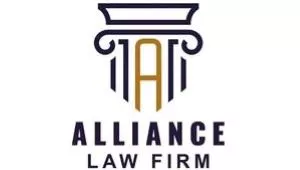1. Introduction:
An employee's well-being is an important consideration and challenge for organizations because good well-being extends beyond a comfortable office environment. The employee's well-being reflects the office environment and its influence on the mental and physical health of the employee. Workplace well-being relates to every area of one's working life, from the quality and safety of the physical environment to how workers feel about their work, their working environment, the climate at work, and the work organization.2
In the dynamic landscape of the modern workplace, technology has emerged as a driving force that solves the traditional employee problems of well-being and productivity. Organisations can assure employees of a less stressful work environment by including technology that enhances productivity. Currently, the role of technology is growing in the workplace. From communications to organization and management of organizations, in the fast-paced and ever-evolving business world, technology is an indispensable tool for enhancing employee well-being and productivity. Over time, employees' well-being has proven to have a positive impact on organisational productivity while technology develops collaborative and analytical tools to assist roles. Therefore, organizations can use technology to promote physical wellness, flexible working hours, remote work, etc. Technology also enables employees to perform their roles better, making several organizations adopt multiple technological solutions to improve performance in their roles. Organisations that incorporate technology can positively improve employee well-being and productivity.
Technology also balances employee well-being and productivity. Employees can use technology to ensure a high productivity level while still reducing their workload. Modern technology practices have proven to enhance employee well-being and offer strategies to leverage technology for a healthier and more productive workforce. This article explores the different uses of technology in employment well-being, it discusses best practices and strategies for organisations intending to use technology to transform their workplace.
2. Meaning and Importance of Employee Wellbeing:
Employee well-being is the physical, mental, emotional and economic health of employees which are influenced by factors such as their relationships with co-workers, their decisions, tools and resources accessible to them, salary, and workplace safety which significantly impact on the wellbeing of employees.3 It also refers to the health and comfort of a worker throughout all aspects of their job, such as physical and mental health, job satisfaction, and work-life balance. These are made up of two major components: the company's impact on employees in and out of work; and organizational support to employee personal life.4 It has been noted that employee wellbeing is essential because it creates a positive company culture, and boosts collaboration, problem-solving and innovation. Employee wellbeing is a sine qua non for a healthy work environment. Organisations that promote well-being aid stress management for employees while also maintaining a positive and productive environment.
3. Technology as a Tool for Employee Well-being and a Driver of Productivity:
Presently, many types of technology can be incorporated to positively impact other areas that affect employees' well-being. Some technologies support employees' well-being through the proliferation of health and wellness apps and wearables. Once employees' well-being is accomplished, organizations can boost employees' productivity. The entire essence of the traditional workplace is to ensure that physical workflow is monitored to achieve certain required results daily. Office technology tools replicate the physical workplace environment in an online environment for the smooth operation of organisations virtually. Technology has transformed many roles, e.g., human resources. Applications assist HR personnel and make the role less tedious while ensuring the right candidate is picked during a job hiring exercise. Technology can be utilised to improve general workplace well-being. Technology can be used to promote employees':
a. Physical Wellness:
The physical wellness of an employee is a part of the well-being that technology can improve. There is a global health concern about white-collar jobs because employees are at risk of poor posture and have other detrimental effects on physical health due to sitting for a long time. Modern technology and science enable employees to actively monitor their health daily. Sophisticated mobile health applications and wearable gadgets have been developed; these devices can monitor exercise activities, heart rates, blood pressure, and other vital signs. These technological solutions enable individuals to know when to take a break and how to manage their health. These applications constantly set reminders for simple physical activities such as walking and stair climbing, which are good cardio-vascular exercises.
Wearable devices like "Fitbit" have empowered employees to monitor their physical activity and overall health. These devices encourage employees to lead healthier lives by tracking their fitness, diet, and sleep patterns. These applications also help prevent health issues because they contain health information about the individual and may offer treatment solutions. Fitness apps like Fitbit, for example, empower employees to take charge of their physical well-being by tracking activity, sleep, and nutrition. This leads to healthier lifestyles and increased vitality, which, in turn, positively influences workplace productivity. Companies that promote such apps can expect to see reduced absenteeism and higher employee engagement since all employees are active.
b. Mental Wellness:
Employees' mental health affects their work attitude; this makes mental health a critical component of employee well-being, and technology offers an array of tools to support it. After the COVID-19 pandemic, a study shows that 42% of employees globally have reported a decline in mental health.5 When employees develop mental health concerns caused by stress, they hinder the organisation's goals and result in progress stagnation. Mobile apps like Headspace and Calm have gained widespread popularity as they enable employees to manage stress, practice mindfulness, and access mental health care resources right from their smartphones. These apps provide accessible and convenient solutions to cope with the challenges of the modern work environment. Technology can also facilitate the implementation of workplace wellness programmes to promote well-being. The data collected can be used to tailor wellness programmes for individual employees, promoting a healthier workforce.
c. Flexible Work Arrangements:
The advent of technology restructured our traditional work lives and fostered the rise of flexible work arrangements. Employees can use work tools to tailor their schedules to accommodate personal responsibilities, reduce the stress of commuting, and perform duties from home. This flexibility promotes well-being and job satisfaction, ultimately translating into enhanced productivity. The ability to work from home or other remote locations not only grants employees greater flexibility but also significantly reduces the stress and hassle associated with daily commuting. The COVID-19 pandemic, for instance, compelled numerous businesses to adopt remote work technology, leading to improved work-life balance for their employees. Now, employees can have family time and rest more while still being productive. Technological advancements have powered remote work, which is a defining feature of the contemporary workplace. Remote work improves employee well-being by affording a better work-life balance. Apart from remote work, companies have incorporated work-from-home policies that enable workers to work a few days from the office and other days from home. Technology has provided resources that monitor employees' daily activity from wherever they work.
4. Technologies used in Improving Employee Wellbeing and Productivity:
Identifying the right technology suitable for an organization is a very important factor in deploying technology for the well-being of employees.
a. Employee Assistance Programmes (EAPs):
Organizations can use EAPs to improve the well-being of their employee. These programs can promote workplace wellness initiatives. EAPs offer employees access to support services such as counselling, crisis intervention and resources for managing personal and work-related challenges6. The program can use digital platforms to ensure that employees have easy access to assistance whenever it is needed. The main features of an ideal EAP are as follows: easy accessibility, 24/7 availability through texts or emails, confidentiality and work-life balance assistance.7
b. Collaboration and Communication Tools for employee productivity:
Modern technology practices have transformed the way employees collaborate and communicate. In the traditional workplace, collaboration and communication call for physical presence, limiting collaborations even within organisations because of the stress or cost attached to collaborations for events, e.g., seminars. Collaboration and communication tools are prominent ways through which technology elevates productivity. Technology promotes increased internal and external collaboration, an essential productivity factor. Office technology tools can be used to organise webinars (online versions of seminars) between multiple teams and organisations in multiple regions.8 Office technology enables easier communications among multiple teams; it has transformed the way teams interact, irrespective of geographical barriers. Teams separated by miles can now work as closely as though they were in the same office, fostering a sense of unity and synergy. Tools like Slack, Microsoft Teams, and Zoom have become indispensable for remote and in-office teams alike. These platforms facilitate real-time communication, file sharing, video conferencing, and project collaboration, fostering teamwork and reducing the sense of isolation often associated with remote work. The ability to stay connected and collaborate seamlessly has a profound impact on organisations.
c. Automation to improve employee efficiency and productivity:
In today's fast-paced business environment, automation has become synonymous with efficiency. Technology is used to improve the quality of work and reduce mistakes and manual labour, ensuring minimal stress but achieving maximum results. Technology provides automation and time-saving tools. Automated technology can help organisations increase clientele, reduce downtime, and eliminate human error. Technology automates repetitive and time-consuming tasks, freeing employees to focus on more value-added activities.9 Organisations have found a way to streamline workflow even during non-office hours through automation. For instance, AI-driven chatbots can provide rapid customer service responses, reducing customer wait times and frustration and allowing human employees to tackle more complex issues. Automation helps achieve higher productivity and also reduces the workload for employees as they handle fewer monotonous tasks. Office automated technology promotes efficiency and makes office flow and management easier and it can be used in different capacities to make processes easier, e.g., Human resources, Data analysis, etc. Artificial intelligence (AI) and automation streamline work processes by handling repetitive and time-consuming tasks such as replies, invoices, and data entry to improve the organization's efficiency. Chatbots, for instance, assist employees with HR inquiries, saving time and reducing stress. Automation systems manage data entry, making administrative and management tasks more organized. By automating routine work, employees can be more creative and reach maximum productivity.
5. Practical Implementation of Technology for Improved Employee Wellbeing:
There are many ways technology can be used to improve well-being and productivity. The tools below are used by organisations to reach peak productivity while also promoting employee well-being.
a. Artificial intelligence: Artificial Intelligence is a technology that can accelerate employee productivity and improve well-being. AI-powered tools can be essential in the workplace. They save time and improve accuracy, e.g., in proofreading, marketing, and copywriting. Web applications like Grammarly and QuillBot are used to proofread written work. ChatGPT can help suggest content for businesses.
b. Collaboration tools: Tools such as Slack and Microsoft Teams, facilitate seamless communication by breaking down silos and enhancing teamwork. Collaboration and communication tools are beneficial for fostering teamwork and reducing isolation. Other tools that are used with collaboration tools include Time management software, such as Toggl or RescueTime, which aids in optimising work hours, ensuring a balance between productivity and personal time.10 Employees can use priority apps to prioritise tasks, set deadlines, and remain focused. Embracing these technologies can create a work environment that prioritises both the physical and mental health of employees.
c. The Internet of Things (IoT): This is a network of connected devices that can communicate with each other and exchange data. IoT devices can monitor equipment and alert employees when maintenance is needed, reducing downtown congestion and increasing productivity.
d. Cloud computing: This enables employees to upload and access files from anywhere on the internet. An example of a cloud computing tool is the Microsoft 360 platform. This technology has streamlined workflow by ensuring resources are always available for productivity.
e. Augmented and virtual reality: AR/VR is a tool that can be used by organisations to complete complex tasks and promote visual aids. VR technology is becoming more mainstream and can be used to train employees more efficiently by providing visual examples that replicate real-world scenarios.11
6. Employee Well-being under Nigerian Law:
a. Health Insurance: Health insurance is compulsory for all employees in Nigeria12 under the National Health Insurance Authority established under the National Health Insurance Authority Act 2022. This scheme provides access to quality healthcare services at affordable rates. It covers a wide range of medical conditions, including basic primary care, emergency care, and specialist care.13
b. Maternity Leave: This is a mandatory benefit that provides female employees with time off work during pregnancy and after childbirth. The duration of maternity leave is 12 weeks, and it is a paid leave.14 This time off work allows female employees to recover from childbirth, bond with their newborn(s), and seamlessly transition back to work without neglecting the welfare of their child(ren).
c. Paid Sick Leave: The Nigerian Labour Act provides employees with time off work due to illness or injury for up to 12 working days.15 The duration of paid sick leave can also be determined by the employment contract. Paid sick leave provides employees with the time they need to rest and recover without worrying about their job security or financial well-being.
d. Mental Health Benefits: The Mental Health Act of 2021 recognizes the importance of mental health, and mandates employers to provide access to mental health resources and support for their employees. This support may include counselling services, mental health days, and other related benefits. As an employee, having access to mental health support can help you manage stress, anxiety, and other mental health conditions that may affect your work performance.16
e. Annual Leave: Employees are entitled to annual paid leave for at least six (6) days.17 However, this provision can be deferred by the contract of employment.
f. Safety, Health, and Welfare of Workers: The Factories Act18 provides for the protection of health, safety and workers welfare. It focuses on the workers exposed to occupational hazards, by taking measures to prevent injuries and accidents. It deals with cleanliness, overcrowding, ventilation, lighting, drainage, sanitary conveniences, and the duty of inspectors as to sanitary defects; general safety provisions for workers working with machines etc.
7. Legal Considerations in the Use of Technology to Enhance Employees' Well-being and Productivity:
While integrating technology into the workplace is important, it is also important to consider the legal consequences. Employers must pay attention to the fact that at every point of enhancing employees' well-being through the adaptation of technology, there is data privacy, extant labour laws and international standards must be complied with.
a. Data Privacy and Protection Concerns:
The adoption of technology in the workplace raises valid concerns about employee data privacy and surveillance. This is because employees would need to supply their personal information to access and effectively use these technologies. For instance, the use of technologies by employers can interfere with the personal data of individuals where organizations elect to leverage technologies such as CCTV to ensure safety at work, or use artificial intelligence technologies to track employees' leave data/health records. Thus, organizations must ensure that they have adequate data privacy and protection governance mechanisms by implementing adequate data security practices such as encryption and two-factor authentication, setting up internal privacy governance frameworks – data privacy impact assessment, data security, privacy policies and notices, records of processing activities, storage limitation, etc. The balance between the use of technology and data privacy concerns is one that employers are obliged to meticulously navigate through compliance with the relevant laws applicable to their operations such as the Nigerian Data Protection Act (NDPA) 2023, the General Data Protection Regulation (GDPR) 2018 and other applicable jurisdictional privacy laws. These laws create a balance with technology to enhance productivity and respect employees' privacy rights. They direct organisations on the legal basis to process personal information in the first place, and how to handle personal data in their possession. Notably, maintaining data privacy and security is not only a legal obligation, but it also builds trust between employees and organisations.
b. Work-Life Balance Challenges:
The convenience of technology can inadvertently blur the boundaries between work and personal life, leading to employee burnout, especially with respect to the emerging 'work from home' practice. Organisations must establish "off-hours" policies and encourage employees to take breaks and disconnect after work hours. Employees can experience burnout due to constant connectivity; organisations should set clear boundaries for workflow. Technology should support, not hinder, a healthy work-life balance. In Nigeria, all organisations are required to have a fixed working time and pay workers for overtime, which is any excess time beyond the fixed working time19. This prevents organisations from demanding employees work from home past working hours because of available technology and not including overtime payment.
Also, when an employee obtains sick leave, the employee can be absent from work and not be required to show up via office tools, especially if the sickness is of a serious nature20 . It is instructive to note that while the provisions of the Labour Act apply to only unskilled workers that provide manual labour or clerical services,21 other type of workers (e.g. administrative, executive, technical and professional workers) may explore the option of negotiating favourable welfare terms in their employment contracts.
8. Conclusion:
The wellbeing of employees is a vital factor for overall organizational wellbeing thus, organizations are expected to employ every possible tool to promote and improve same. There are emerging technology trends and strategies for leveraging technology in the evolving workplace, such as AI, remote work, and IoTs which most contemporary workplaces use for efficient productivity. Going forward, it is imperative that organisations should adopt technological advancements, have transparent policies regarding the use of technology, and emphasise the ethical and responsible handling of employee data. The fast-paced evolution of technology necessitates a proactive approach. Organisations should invest in continuous learning programmes to upskill employees and keep them abreast of emerging technologies. Regular training sessions can keep employees informed about the latest technological tools and their proper usage, fostering a culture of compliance and awareness.
Sustainable strategies for adaptation are crucial and organizations should select basic technology that solves productivity issues rather than complex technology that doesn't solve any specific problems. Also, flexibility in technology adoption is key to an organizations overall strategy, thus allowing for agile responses to industry shifts. By integrating technology responsibly and staying attuned to legal considerations, organizations can create an ecosystem where employee's well-being and productivity flourish symbiotically.
Although there are concerns such as potential isolation, data privacy and security, and employee resistance, the pros outweigh the cons and can be highlighted by promoting digital literacy, therefore balancing remote and in-person work, and enhancing data protection. Technology remains a driving force for employee well-being, and a tool to reduce inefficiencies and improve productivity. Organizations if deliberate, can fully harness the potential of technology to create a healthier and more productive workforce as the future of employee well-being is undoubtedly intertwined with the continued evolution of technology in the workplace.
Footnotes
1 Dr. Ngozi Ole is a Managing Associate at Alliance Law Firm, while Samuel Uzoigwe and Lilian Adat are Executive Associates and Anastasia Edward is an Associate at the same law firm.
2 International Labour Organisation, "Workplace Wellbeing" <> accessed 9 November 2023.
3 M Waida, "What is Employee Wellbeing and Why Does it Matter?" accessed 10 November 2023.
4 TestGorilla, "Employee wellbeing: How to Leverage this Talent Retention Trend and Help your People Thrive" accessed 10 November 2023.
5 Kelly Greenwood and Natasha Krol, "8 ways managers can support employees' mental health" Harvard Business Review, August 7, 2020, hbr.org.
6 Corporate Wellness Magazine, "How to Use Technology to Improve Employee Wellness" accessed 9 November 2023. 7
Medbury Medicals, "Why Your Employees Need Employee Assistance Program (EAP)" accessed 10 November 2023.
8 O Makarova, "The Role of Technology in Productivity" accessed 9 November 2023.
9 Stronghold Data, "6 Ways Technology can Increase Productivity in Manufacturing" accessed 9 November 2023.
10 Toggl Blog, "11 Top Time Management Tools 2023" accessed 10 November 2023.
11 University of Toronto, "Virtual Reality in the Classroom" accessed 10 November 2023.
12 National Health Insurance Authority Act 2021, s 3b.
13 Obi Igbokwe, "Understanding Nigerian Employee Health Benefits" accessed 10 November 2023.
14 Section 54, Labour Act, CAP L1, Laws of the Federation of Nigeria 2004 ("Labour Act")
15 Section 16, Labour Act.
16 Obi Igbokwe, "Understanding Nigerian Employee Health Benefits" accessed 10 November 2023.
17 Section 18, Labour Act.
18 Factories Act, Cap F1 LFN 2004
19 Section 13, Labour Act.
20 Section 16, Labour Act.
21 Section 91, Labour Act.
The content of this article is intended to provide a general guide to the subject matter. Specialist advice should be sought about your specific circumstances.




